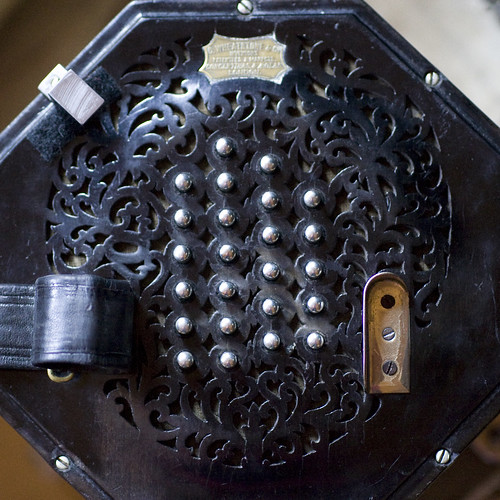I spent today at Bunkfest, playing recorder for Aldbrickham Clog & Step Dancers. I was (somewhat unexpectedly) the only musician, a position I’m going to find myself in more often next season. Originally I played tenor recorder, but quickly discovered it was just too low to be audible out of doors. I switched to descant, as you can see, but it’s still a challenge to be heard above half a dozen clog dancers, ambient noise from an audience and in this afternoon’s case, a Punch & Judy show and a helicopter!
After that particular performance a lady came over to me and asked whether I’d ever played a Renaissance-style recorder. I said I hadn’t, so she handed me one of these. I hadn’t been aware that Renaissance recorders have a much wider bore, which makes them much louder – and therefore ideal for playing out of doors. Perfect! I’d already been thinking about going to the Early Music Festival, but now I’m definitely going to go and try out some Renaissance recorders. So thank you very much to a lovely lady with a bag full of covetable recorders, for her extremely helpful advice.
As well as meeting some lovely people, we also saw some fabulous performances. The Outside Capering Crew had been recommended to us as a must-see, and we did manage to catch the tail end of one of their sets. The highlight of the day for us was watching their performance with Berkshire Bedlam, collectively known as The Big Caper. If you think you know what Morris Dancing looks like, go and see these dancers – they’ll blow you away. We also loved Wild Hunt – visually stunning with black tatters and masks, they also had no traditional musical accompaniment, only drums, which made them very dramatic to watch.
We had an absolutely brilliant day, and I’m now inspired to venture up into the loft and try to unearth some of my old recorder music. If I’m going to treat myself to a new recorder, I’m going to need plenty of music to play!





